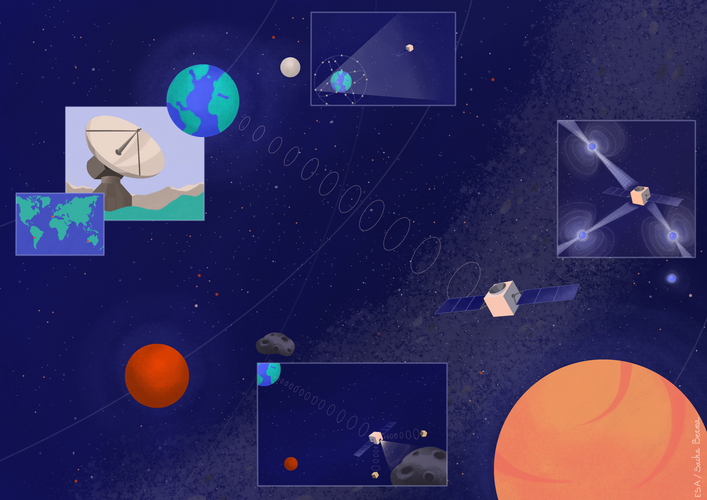
ESA Operations oversees ESA's tracking station network, Estrack, the core of which comprises seven stations in seven countries, including the three DSAs. Furthermore, the directorate is currently operating the tiny OPS-SAT satellite, which is devoted to testing and validating drastically improved mission control capabilities.
In addition to the daily operation of spacecraft exploring space hundreds of millions of kilometres away, ESA's operations teams continually work to develop new capabilities to support future missions, including flight-dynamics techniques, delay-tolerant networks, deep-space communication technologies and innovative satellite control software and systems.
What are other space agencies doing?
ESA shares Estrack capacity with other space agencies, who in return provide tracking services to ESA missions under a number of resource-sharing agreements. These include networks and stations operated by ASI (Italy), CNES (France), DLR (Germany), NASA's Deep Space Network and Goddard Space Flight Center and JAXA (Japan).
For example, NASA's Deep Space Network stations routinely support Mars Express (as well as other, now-completed missions such as Rosetta, Huygens and Venus Express), while Estrack is supporting Japan's Hayabusa-2 mission. In recent years, Estrack has provided support to missions operated by China and Russia, as well as tracking the descent of NASA rovers to the surface of Mars.
Other space agencies are also developing their own technologies for communicating with and navigating deep-space spacecraft. For example, NASA has developed a deep space atomic clock and an X-ray navigation device that determines the position of a spacecraft anywhere in the Solar System, and JAXA has worked on a navigation system using highly accurate 3D radar and navigation guidance control technology for rendezvous and orbit transition to the neighbourhood of the Moon.



